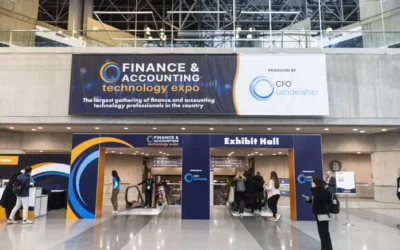After several years of volatility and competing priorities, mid-market CFOs are entering 2026 with a mindset defined by focus and restraint.
New research suggests CFOs are tightening their grip on costs, doubling down on talent and rethinking what readiness means in an environment where disruption has become routine. When Nick Araco Jr., founder and CEO of the CFO Alliance, describes that mindset, he says it comes down to credibility and control.
“The CFO now has to be part operator, part futurist and part credibility differentiator,” Araco said in an interview with CFO.com. “If AI or any other initiative can make the function or the enterprise shine, then do it. If it’s just noise, don’t even bother.”
That approach is reflected in new data from two studies released this fall, the 2025 Diligent Institute Transaction Readiness Report and the 2025-26 CFO Alliance Global Mid-Market Talent & Compensation Trends Report. Both point to a financial leadership class focused less on expansion and growth at all costs and more on execution. According to the data and Araco, mid-market CFOs are building their businesses through discipline, strengthening their teams and defining what readiness means within companies facing constant disruption.
Caution replaces momentum in mid-market dealmaking and audit relationships
After years of pent-up optimism, mid-market CFOs are now assessing how ready their organizations are for complex transactions that require governance, visibility and board alignment.
According to the Diligent Institute Transaction Readiness Report, nearly half (49%) of organizations list M&A or strategic partnerships among their 2025 growth priorities, yet almost half say market volatility has delayed planned transactions. Only 4% report full integration between governance, risk and finance systems, while 60% admit they have partial or no integration.
“The last thing a CFO wants to do right now is take on unnecessary implementation risk,” said Araco. “We’re living in a world of disruption and volatility. Nobody’s wiping their tech stack clean to start over.”
“Our CFO members are asking us for recommendations to [accounting] firms that are mid-market themselves, and they’re saying, ‘Please don’t send me the Big Four, the next-tier firms or any group owned by private equity.’”

-Nick Araco Jr.
CEO and founder, CFO Alliance
That lack of integration is now one of the biggest obstacles to change readiness and ROI on technology. The report found just 5% of companies use AI to evaluate transactions or automate due diligence. The rest still rely on manual review, which data suggests can increase costs and slow down the finance function.
Governance and talent readiness also ranked high among challenges, particularly in M&A. Forty-two percent of executives surveyed in the Diligent report said their organizations need clearer internal roles and transaction playbooks, while 40% said they lack personnel experienced in M&A. Fewer than half of boards are actively engaged in shaping transaction strategy, leaving CFOs to fill both operational and oversight roles.
For Araco, that means CFOs are redefining what it means to be ready for a major business transaction like an M&A deal or technology overhaul. “We’re starting to see AI-assisted forecasting, workflow automation and self-service dashboards take hold,” he said. “That’s where credibility comes from, when your forecasts hold up and your data tells the same story as your strategy.”
Araco said this trend extends beyond technology and into the legacy organizations that mid-market CFOs have seemingly trusted for decades. Now, one of the most common questions his team receives from CFO Alliance members is where to find reliable audit and tax partners that are not tied to the Big Four.
This is likely due to the largest accounting firms cutting entry-level roles, leaning into agentic AI tools and growing increasingly bureaucratic, which many CFOs say has made them less responsive to their needs. At the same time, mid-sized firms outside that group are being bought up by private equity investors, shrinking the pool of independent partners that mid-market finance leaders can turn to.
“Our CFO members are asking us for recommendations to firms that are mid-market themselves,” Araco said. “And they’re saying, ‘Please don’t send me the Big Four, the next-tier firms or any group owned by private equity.’ That eliminates almost three-quarters of the market.”
He said many CFOs feel the largest firms are moving away from the partnership model that originally defined the accounting profession. “The firms staying partnership-driven, without outside investment, are attracting attention,” he said. “They’re putting their career paths and development programs out there to woo talent and clients. The problem is that those firms are becoming harder to find.”
Recent consolidation is narrowing that choice even more. Araco pointed to Herbein + Company, one of the last independent firms in Pennsylvania, which sold to Cherry Bekaert this year. “That was a big one,” he said. “It tells you how fast the mid-tier options are disappearing.”
CFO compensation, company benefits and the talent crunch
If transaction readiness depends on integration, Araco says the execution element depends on people. The CFO Alliance 2025-26 Global Mid-Market Talent & Compensation Trends Report reveals how many mid-market organizations are operating with thin leadership benches.
More than half (52%) of respondents rate their succession strength as moderate, while 34% say it’s weak or nonexistent. Only 15% feel confident that their next generation of finance leaders is prepared to step up.
“The biggest risk for mid-market companies isn’t technology, it’s talent,” Araco said. “CFOs are investing in the agility of their people as much as the agility of their numbers.”
According to the report, the most in-demand upskilling areas heading into 2026 include financial operations optimization at 54%, strategic thinking and commercial acumen at 50%, storytelling with data at 42% and AI or data fluency at 35%. Burnout risk also remains high, with 41% of finance leaders citing it as a growing concern.

Compensation remains the primary retention lever, but mid-market firms are reshaping pay to emphasize long-term performance. More than half of CFOs earn between $250,000 and $500,000, while VP-level finance leaders average $200,000 to $250,000. One in four C-suite finance leaders now receives equity or stock options, signaling a move toward shared outcomes and ownership incentives.
Bonuses are also expanding. Nearly three-quarters (74%) of senior finance executives receive annual bonuses, with nearly 30% reporting awards worth between 25% and 50% of base pay. Still, 16% of firms offer no bonus at all, reflecting conservative post-pandemic spending.
Araco said outside of their own compensation boosts, mid-market CFOs are reframing benefits and pay for the entire company in an effort to create a message of value. “Benefits are becoming a strategic signal, not a line item,” he said. “It’s one of the key areas that helps attract and retain top talent.”
Realism defines the road to 2026
In both reports, one theme is constant: The idea that mid-market CFOs are approaching 2026 with realism. They aren’t wiping systems clean or chasing trends. Rather, they are doubling down on what they know works with a sense of caution and realism in mind.
The Diligent Institute report calls this shift a return to fundamentals, as CFOs focus on audit reliability, forecasting accuracy and maintaining investor confidence in volatile markets. It found that 42% of boards are only partially engaged in transaction oversight, forcing CFOs to act as translators of uncertainty between directors, investors and teams.
That phrase comes directly from Araco, who said CFOs today must interpret imperfect information across multiple audiences. “You’ve now become, on top of chief financial officer, the chief reality officer,” he said. “You’re the chief translator of uncertainty because everyone’s operating with different data and different levels of confidence.”
The mid-market CFO’s challenge, he said, is to translate numbers into trust. That means connecting workforce strategy to financial outcomes, proving ROI on technology adoption and keeping teams aligned amid constant noise.
The CFO Alliance data reinforces this view. More than half (51%) of mid-market companies report no AI adoption within finance. Among those experimenting, 33% use AI for workflow automation, 21% for dashboards and 17% for forecasting.
Adoption is slow but deliberate, and CFOs view AI as a performance tool rather than a standalone project. Even as many explore automation, they continue to prioritize human judgment. The majority describe leadership communication, collaboration and adaptability as top soft-skill needs for 2026.
For Araco, the lesson from both sets of data is clear. The CFO role is expanding faster than most mid-market organizations are currently equipped to handle. Yet, he believes those who can translate uncertainty into credibility will define the next phase of leadership.
“CFOs are no longer being measured only by financial acumen,” he said. “They’re being measured by how clearly they can connect people, technology and performance to outcomes that the market believes in.”





